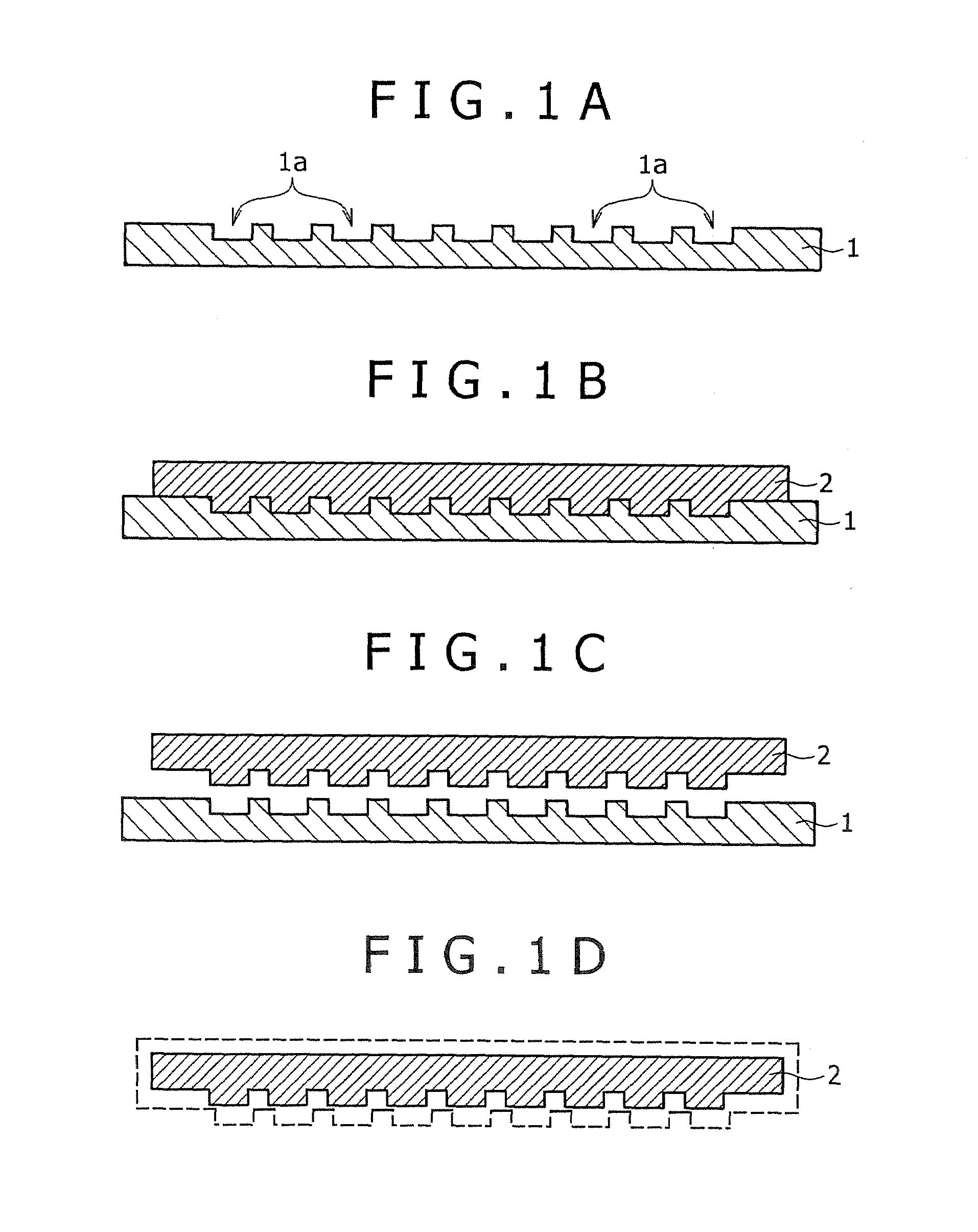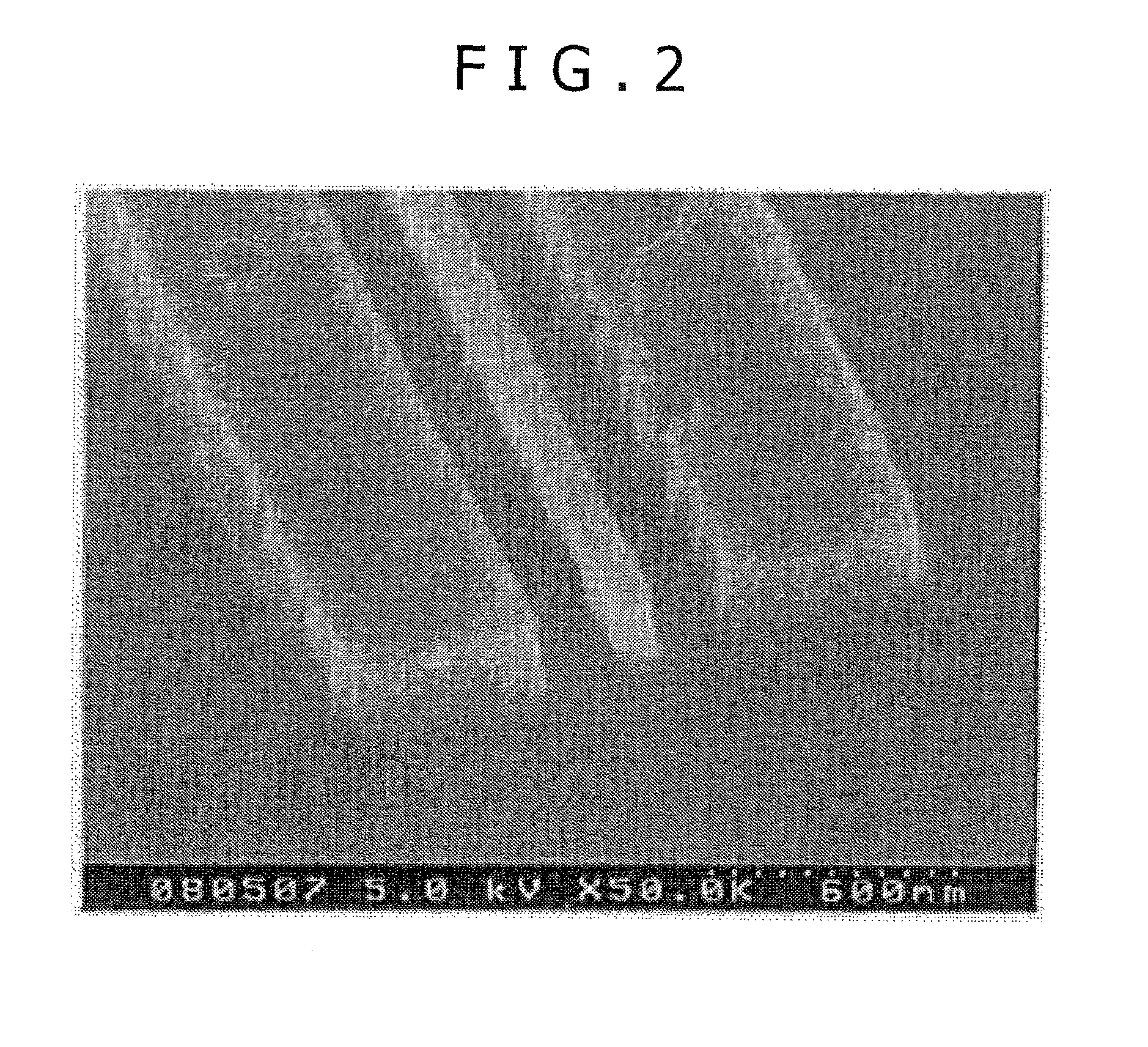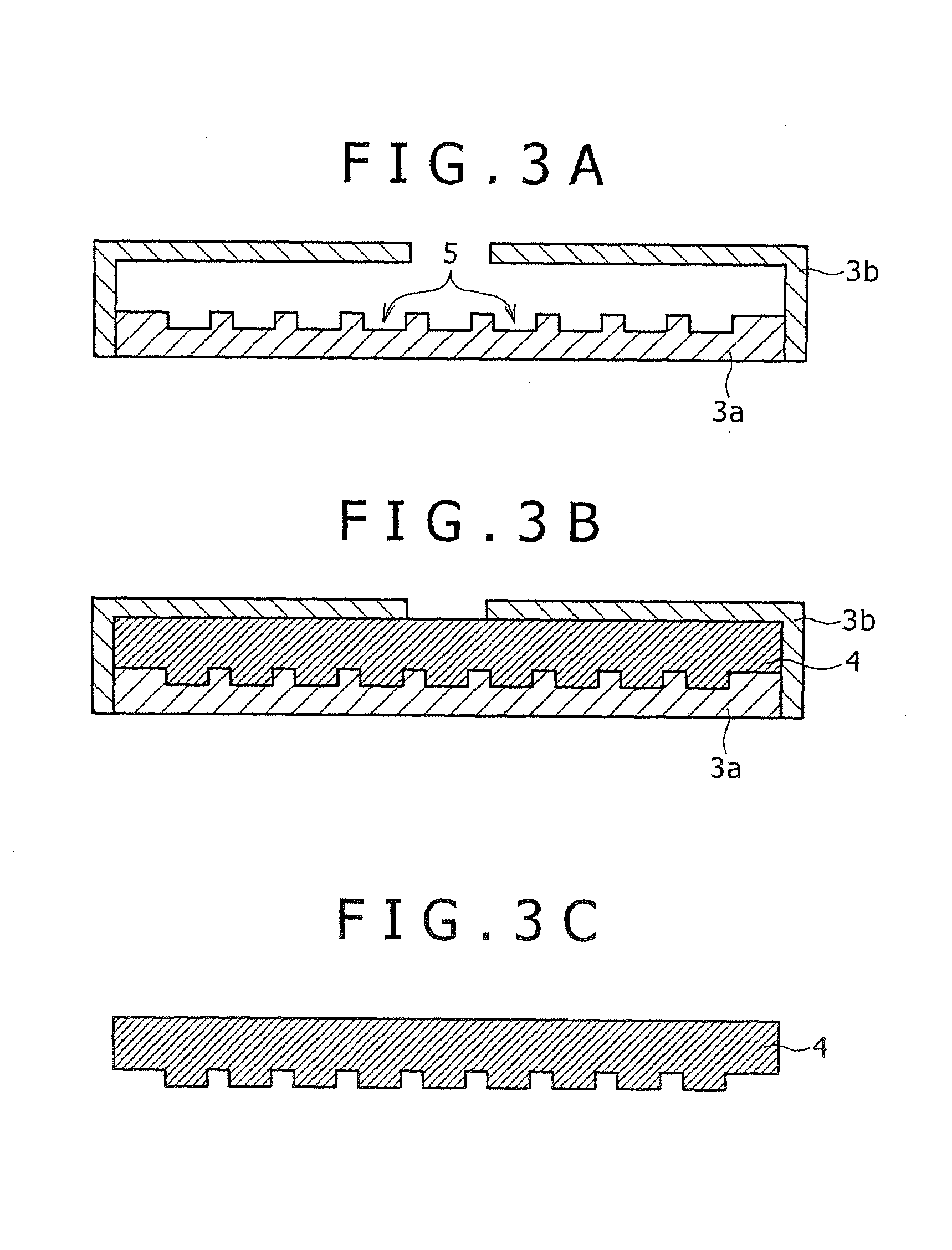Methods for producing glasslike carbon
- Summary
- Abstract
- Description
- Claims
- Application Information
AI Technical Summary
Benefits of technology
Problems solved by technology
Method used
Image
Examples
Embodiment Construction
[0019]The present invention will be illustrated with reference to a preferred embodiment. The method for producing a glasslike carbon according to this embodiment sequentially carries out the steps of pouring a curable resin (thermosetting resin) into a concave portion of a mold (pouring step); forming the thermosetting resin in the mold by heating (forming step); demolding the formed resin from the mold (demolding step); and carbonizing the demolded resin (carbonizing step). FIGS. 1A, 1B, 1C, and 1D are cross-sectional views illustrating the steps according to this embodiment. Specifically, FIGS. 1A, 1B, 1C, and 1D illustrate the mold, the pouring and forming steps, the demolding step, and the carbonizing step, respectively.
[0020]Initially, the pouring step will be explained. The mold for use in the present invention is not specifically limited, as long as it has a surficial shape corresponding to the surficial shape of the target glasslike carbon. With reference to FIG. 1A, the mo...
PUM
| Property | Measurement | Unit |
|---|---|---|
| Length | aaaaa | aaaaa |
| Fraction | aaaaa | aaaaa |
| Fraction | aaaaa | aaaaa |
Abstract
Description
Claims
Application Information
 Login to View More
Login to View More - R&D
- Intellectual Property
- Life Sciences
- Materials
- Tech Scout
- Unparalleled Data Quality
- Higher Quality Content
- 60% Fewer Hallucinations
Browse by: Latest US Patents, China's latest patents, Technical Efficacy Thesaurus, Application Domain, Technology Topic, Popular Technical Reports.
© 2025 PatSnap. All rights reserved.Legal|Privacy policy|Modern Slavery Act Transparency Statement|Sitemap|About US| Contact US: help@patsnap.com



